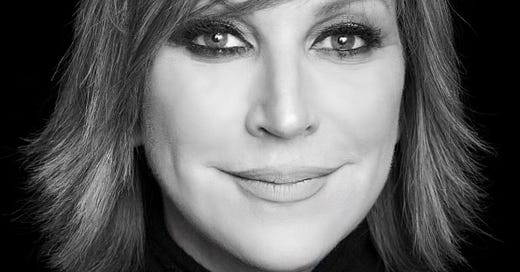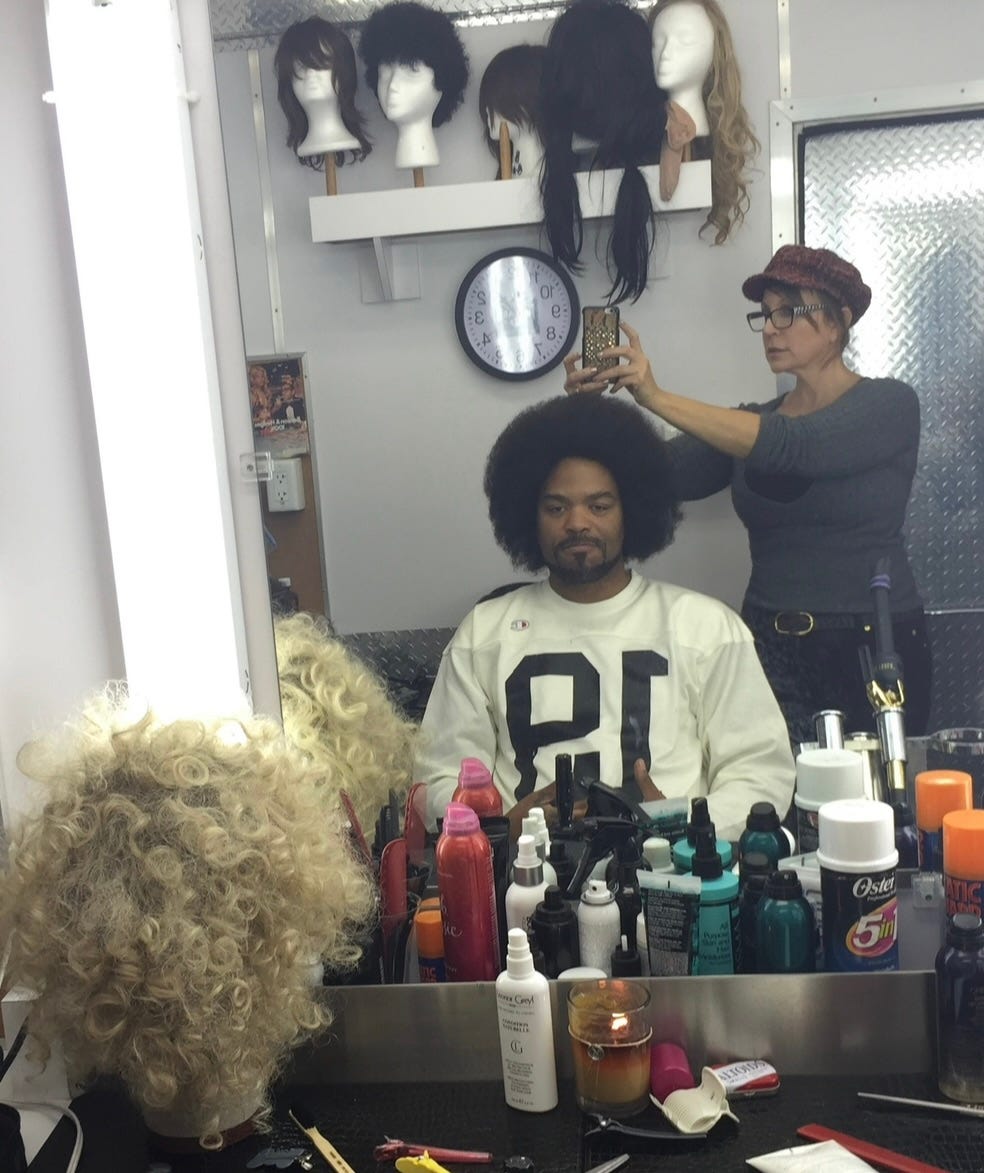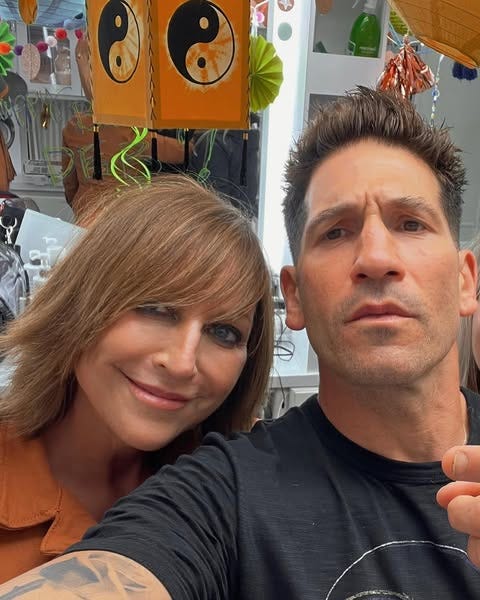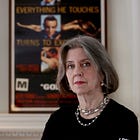SE 027: Janice Kinigopoulos on Bringing Characters to Life Through Hair
The acclaimed stylist from "The Deuce," "The Wire," and "We Own This City" discusses her illustrious career.
As hair stylist and hair department head, Janice Kinigopoulos has amassed an impressive list of film and TV credits: Runaway Bride, Nashville, Jackie, Wonder Woman 1984, The Wire, Treme, The Deuce, and We Own This City, to name a few. She’s lent her talents to music videos, magazine covers, and fashion spreads, and has worked with some of the biggest names in entertainment. Her work has been celebrated by the Maryland Film Coalition, written up in DC Magazine, and profiled in The Cut. And yet, despite these impressive achievements, what makes her light up most in conversation is discussing the work she’s done with her kids, Stephen Kinigopoulos and Alexa King Stone. “I work a lot with my kids now,” she says. “They were 9 and 11 when they started visiting the set of The Wire. It’s interesting that they’re directors [now], and they direct together.”
Although she, Stephen, and Alexa have collaborated on numerous projects together, she says there’s one—a music video for Chris Stapleton’s “Think I’m in Love with You”—that was particularly memorable. “My dad passed away in February last year. He was in hospice, and my son was visiting him when he got the assignment to make a treatment for the song. He wrote the treatment about my dad being in hospice. The video is [about] a man that dies, and he levitates. The family is still looking at him in bed, but the man goes off and starts dancing, and then he gets to heaven and heaven is a disco. He sent this treatment in, and they got the job. Chris and his wife, Morgane, who’s in his band, dedicated it to my [parents], Poppop and Mommom, which was so sweet. They didn’t have to do that, but they knew it was about Stephen and Alexa’s grandparents. The lead in the video was Andre Royo from The Wire, who the kids knew when they were young. It was a full circle moment because I hadn’t seen him in so long. His mother has Alzheimer’s, and he’s been a caretaker. It was meaningful for so many people that had lost somebody because it ends on a positive note.”
Over a lengthy Zoom call, Kinigopoulos and I discussed her most challenging career moments, the importance of research, and her advice to up-and-coming artists.
SANDRA EBEJER: How did you get started in the entertainment industry?
JANICE KINIGOPOULOS: I was in college at the University of Maryland, and I didn’t love it. I’m not much of a student. I got a part-time job at Bloomingdale’s in the makeup department, and I loved it, so I asked my parents—this is in the ’80s—if I could stop going to college and pursue makeup full time. So I did. I married my college sweetheart, and he lived in Baltimore. When I moved to Baltimore, there was John Waters and Barry Levinson—that whole new filmmaking brewing there. I worked on a made-for-TV movie, and they needed hair help. I’ve always been great with hair. My mother worked for Vidal Sassoon when she was young. She was a shampoo girl there and she did hair when she was younger, so I was always aware of hair. I never went to hair school; I was just natural at hair.
I started working on films in Baltimore, and this is before union films really came. And then I did one called Wide Awake, and it turned union while I was on the [production]. The man I was working for was union and he was like, “I need to get you in the union.” So he arranged it for me. But it was hard because people were like, “She never went to hair school.” I never said I went to hair school, but it became an issue. I called the union and said, “Look, this is the deal. I’m in the union, but I never went to hair school.” And the guy on the other phone was like, “Do me a favor. Just go to barber school.” So I signed up for barber school. I lasted four months. I learned a lot, but I was working, and I had kids, so I couldn’t do it. So, school of hard knocks, that’s how I started doing hair.
In looking over your portfolio, you’ve worked on an interesting mix of projects—some require more glitz and glamour, while others are much more bloody and gory. Do you have a preference or find one type of project to be more challenging than the other?
That’s a really good question. I do love the glitzy because I love fashion, but there’s something to be said for bringing a character to life through hair. It’s the subtle things. It’s how a person runs about their day and what they pay attention to. Did they wash their hair? Because maybe shit’s gotten bad, and they just don’t pay attention. Or maybe they’re really coiffed. I like reading the script, figuring out a character, and figuring out how to portray what’s going on. I really do like both equally. I wouldn’t say one is more challenging than the other. I think what’s maybe more challenging sometimes is the actor. People are funny about their hair.
Speaking of actors, I read an interview you did in which you talked about Method Man’s response to his wig in The Deuce. How much do the actors have a say in their look? Is it generally a collaborative process?
He was great, and it was to my good fortune that I’d worked with him before on The Wire. Not to say that he wouldn’t have been open, but it is always nice when you know somebody and you’ve worked with them before. But I definitely collaborate with them. I mean, it’s their character. They are taking on a persona. I’m just here hopefully to bring it to life. I do have my ideas, and usually we’re on the same page. Sometimes it’s in the script, but a lot of times it’s not.
For example, Maggie [Gyllenhaal in The Deuce]—I brought [a wig] from my Wire stash for the test. Because she played a prostitute, the wig had to be a wig. It didn’t have to look like her hair. It was a store-bought, hard-front kind of thing you just put on her head. But she’s pretty particular. I brought the normal ’70s, part in the middle, long hair, but the minute I put the first white girl afro on, it was a no brainer. Like, “That’s it!” And then we had to make one that was more to her liking. She had a particular idea of [having] the curl be smaller, the color be a little different. But it started as, we’re on the same page. That was exciting for me. But definitely, I respect actors too much to assume that I know what they should do without talking to them first.
In many of the projects you’ve worked on, the location or time period is just as important as anything else in the show. You can’t think about The Wire without thinking about Baltimore, or The Deuce without thinking about New York City of the ’70s. What type of research do you do to ensure that the characters’ appearance is truthful to the place and time in which the project is set?
I love the research process. I am so intrigued by hair. It’s kind of an obsession—people in different periods and why they wore their hair like that. Like Something the Lord Made—that was Alan Rickman, who was amazing to work with. Alan was playing a real person. He really wanted to honor the person. Debi [Young, makeup artist] and I researched everything. I obsessed over pictures. I wanted to see his hairline, because [the characters are] young, they’re a little older, and then they’re really old. Things change—they gray, [get] salt and pepper. Alan had three different sets of wigs and hair pieces because we still honored the same hairline, but it receded as he got older.
So, yes, I do a lot of research. Another thing [is] where something is shot. In a small town, I always know I’m safe doing hair that goes back further, because small towns aren’t up to speed. Not everybody is walking out of a magazine. Some people do their hair the same way they’ve been doing it. I like to research if it’s a real person, where they live, what the status is, the economy, their income, and how fast running the town is.
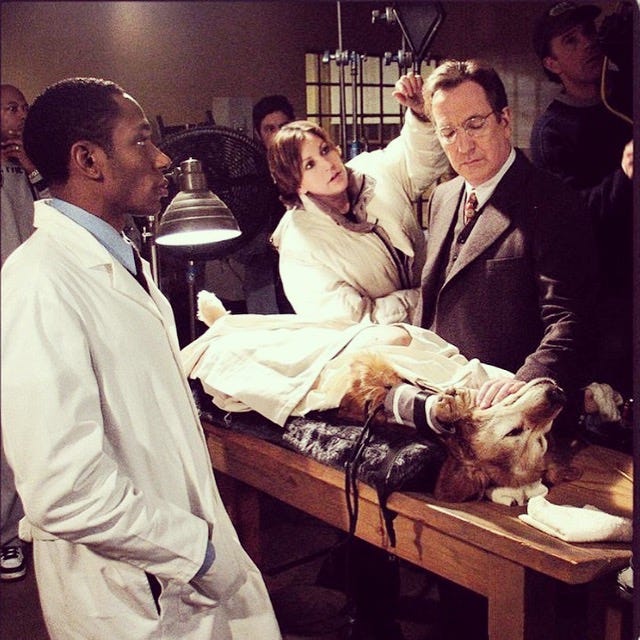
You’ve worked closely with Debi Young on many projects, and she’s said she sees her work as much more than just makeup. She’s also there to be a therapist, of sorts. Do you find that that’s the same for your role?
There’s no one like Debi. I like to think I help people. I think I’m a nice person. But there really is nobody else like Debi. When you have somebody in your chair early in the morning, and it’s the calm before the storm, you want to set the tone. I try to help and listen and try to set a good tone of communication and love. Sometimes you can tell something’s on their mind, so you might talk it through with them. But I would say Debi could do that with any person on the planet.
We met [when] we both showed up for a job at a news station. She was so friendly. A lot of times in the beginning, people are competitive, and I’ve just never been like that, and she’s not like that. We hit it off from the very beginning and when we started working together on projects, things would happen and we’d look at each other and say, “What is that?” It was people being vindictive or jealous. We never approach things in that manner, so when it started happening, we didn’t understand it. And then as friends, we were like, “Oh, this is what’s going on. We need to handle this in a way that we feel good about.” We don’t go there, because it was just trying to draw you in. So I feel very fortunate that I grew up in the business with Deb, because I learned so much. She’s pretty special.
Who inspires your work?
I love Barbara Streisand. I’m listening to her book, and I think she’s pretty amazing, how she came up at the time she did as a woman, and acts, directs, produces, and everything. I love so much art. I can’t think of one particular artist.
My grandmother, Mary, was a Holocaust survivor, along with my mother, Micheline, who is among the few remaining survivors still alive. Mary was born in London and lived in France. She taught my family perseverance, humor, and acceptance. Fashion was in every part of her being. She sold couture clothing at Saks Jandel until she was 85. She has always been a huge inspiration to me. Her laugh was everything.
When were you proudest of your work? Were there any particularly challenging moments that you felt proud to have pulled off?
One of them was The Deuce, because they lost their hair designer, and they called me in at the last minute. I’ve worked a lot with George Pelecanos, who was the showrunner for that and produced that, and [producer] Nina Noble, and the fact that they had faith in me to come to New York—New York is a rough town for people, because they have so many talented people that do makeup and hair. So when you come from Baltimore, Maryland to design a show, people might wonder why that is. I love that they had faith in me, and I think I really delivered. The fact that Maggie’s wig was a Halloween thing that year, and Method Man looked amazing... I liked the work that I designed and executed.
Also, not to keep bringing up my kids, but because my father was very ill and my mom has dementia, I wasn’t able to take movies. We Own This City was the last long-term project, because I had to be accessible to them. So it was a great thing to be able to work with my kids on anything and everything. I’d go to Nashville, where they live, and work for two days and come back. It was still a way to express myself, do my job, make a little money. We did a movie. My son wrote a movie called Fishbowl, and it’s on Amazon Prime. We’re pretty proud of that. George Pelecanos produced it. He’s always been a mentor to my son, which has been very kind. Personally, that was a big deal. It was a big thing to pull off because my husband and I produced it, too.
What is your career advice for those who want to follow in your footsteps?
It’s interesting now, because it’s so different. I didn’t have YouTube or social media to learn. It was all on my feet. So I would say, just do everything. Go places, do the work, even if you’re afraid. Test with people and take pictures of it, shoot it. Now, everyone has an iPhone. It’s amazing the resources people have. But also, [learn] from books. That’s the only thing I worry about with this new generation. Not to sound like an old fogy, but I want them to really dig deep into Victorian ages, why hair has evolved the way it does. I hope they don’t look at pictures and copy them, but that they really dig deep and do the research and read about it. So I’d say, read, look at old movies on film because film is different than digital, follow old actors and actresses. Don’t just do the YouTube thing.
Also, I wasn’t formally trained, and I think there’s something to be said for that. It’s great if people can do that, but if they can’t, there’s nothing wrong with learning as you go. That’s a definite difference, I think, between me and a lot of people that are in this business, because they usually go to hair school. For kids or people that are starting, it’s great if you can go to school, but if you can’t, I wouldn’t be discouraged. You still can achieve things.
To learn more about Janice Kinigopoulos, find her on Instagram.
This interview has been edited for clarity and length.
You might also enjoy…


